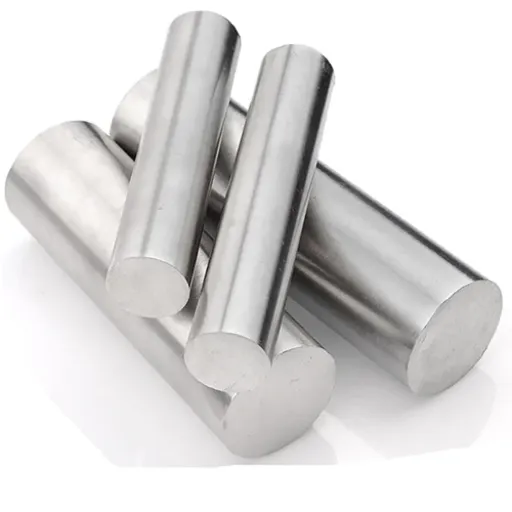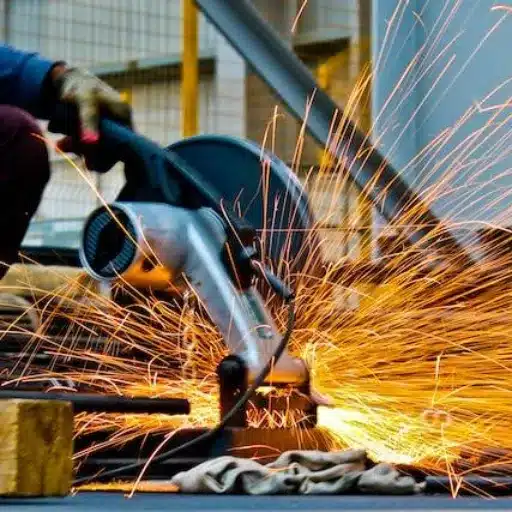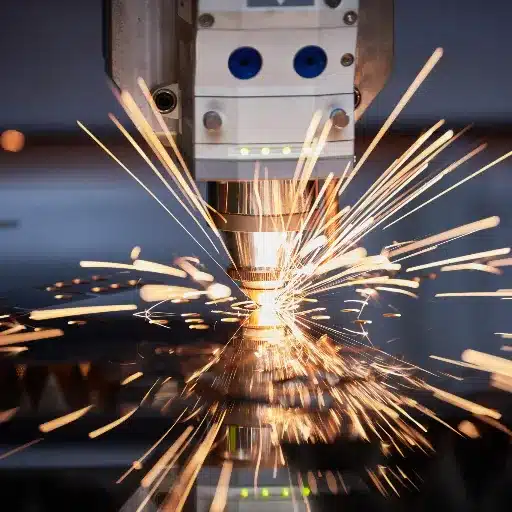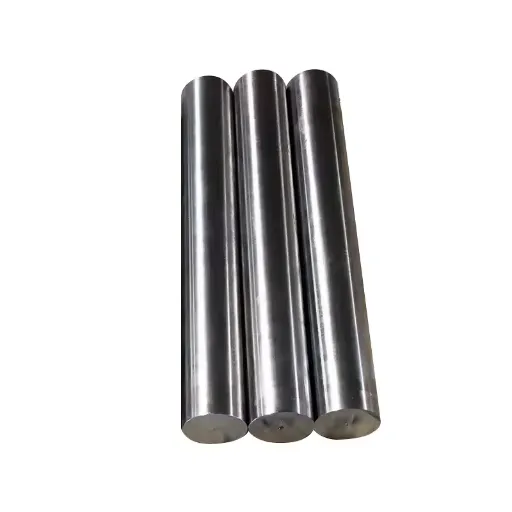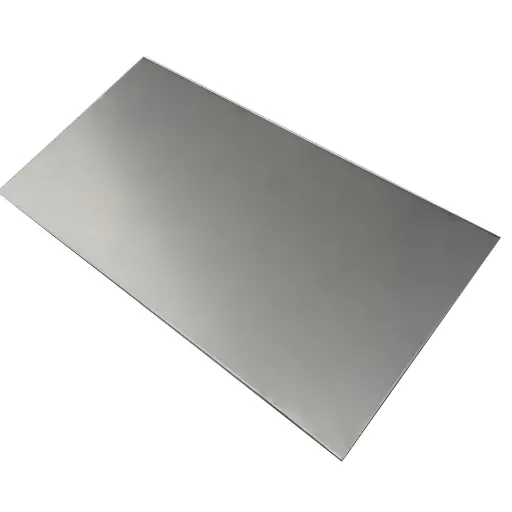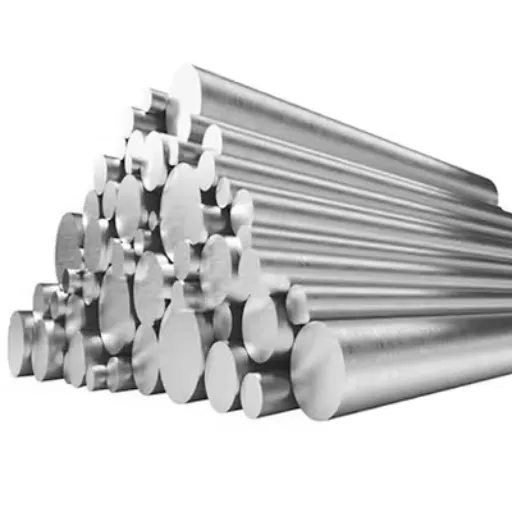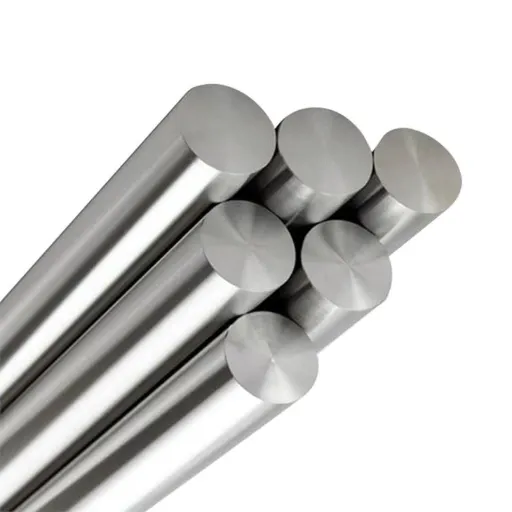Nickel alloy rods and bars are very significant throughout various sectors, since they have outstanding physical properties like strength, corrosion resistance, and versatility even in extreme conditions. If you belong to any of the groups like manufacturers, engineers, or just looking to have materials for your project, then knowing the specific properties and uses of these nickel-based substances would be the way to go. This write-up takes you on a journey to nickel alloy rods and bars, revealing their advantages, leading alloy options, and real-life applications in different industries. So, prepare yourself to discover the features these substances have and how they can comply with the strictest industry standards.
Introduction to Nickel Alloys

What’re Nickel Alloys?
Nickel alloys are metallic materials that consist predominantly of nickel and are frequently mixed with other elements like chromium, iron, molybdenum, or copper to improve their performance characteristics. Nickel alloys are famous for their remarkable resistance to corrosion, high-temperature strength, and diverse applications, hence they find a place in the industries that are hard on materials. These alloys are made to bear the most extreme conditions, like high pressures, temperatures, and corrosive agents, thereby making them indispensable for uses in aerospace, chemical processing, power generation, and marine sectors.
Nickel alloys’ high-temperature mechanical strength and stability up to 1000°F (540°C) are one of the most important features. To give an example, Hastelloy and Monel materials have been categorized as good performers against oxidation and acid corrosion. Besides, nickel-chromium superalloys like Inconel are commonly found in jet engines and gas turbines since they have high-temperature performance and fatigue resistance.
Nickel Alloys’ Properties
Nickel alloys have one of a kind properties that are a mixture of qualities which make them usable in the high-performance application of various industries. Among those, the most notable is the characteristic of very good corrosion resistance especially in the case of hardcore environments with acids, alkalis, or even very moist air. Nickel-chromium alloys like Inconel 625, for instance, stand no chance of being oxidized or pitted even in chemical processing or the marine industry.
The other main trait of nickel alloys is their high-temperature strength, which makes it possible for some nickel-based superalloys to withstand temperatures around 1,000°C (1,832°F) and still retain their mechanical properties. This means they are extensively used for making turbine blades, jet engines, and other heat-resistant components in aviation and power generation markets where the temperature and pressure are extreme. Moreover, these alloys are routinely employed in applications requiring thermal expansion resistance and good creep strength, as well as other physical properties.
Types of Nickel Alloy Rods and Bars

Nickel Alloy Rod Types Overview
Nickel 200/201
The rods made of nickel 200 and 201 are pure nickel alloys with less than 1% non-nickel content available on the market. They are characterized by excellent resistance to corrosion, especially in alkaline and acidic conditions. The rods also feature high ductility and thermal conductivity, thus being suitable for chemical engineering, food, and marine use. Nickel 201 is the one that especially grants higher performance when the temperature is increased.
Monel Alloys (e.g., Monel 400)
Monel rods, namely Monel 400, comprise mostly nickel (around 67%) and copper (30%) with trace amounts of iron and manganese. They are highly resistant to corrosion in seawater, acids, and bases. Monel rods are highly demanded in marine applications, heat exchangers, and pumps due to their strength and durability.
Hastelloy Alloys (e.g., Hastelloy C276)
There are different types of Hastelloy alloy rods and they are all characterized by their resistance to severe chemical environments (e.g. strong oxidizers, reducing agents, and hot acids). For example, Hastelloy C276 is widely used in pollution control, chemical reactors, and flue gas scrubbers due to its strong resistance to pitting and stress-corrosion cracking.
Alloy 600 and Alloy 718 Explained
Alloy 600
Alloy 600, which is also named UNS N06600, is a nickel-chromium alloy that has a very high resistance to oxidation and corrosion at high temperatures. It has 72% nickel and 14-17% chromium, and it is mainly applied in areas like heating equipment, chemical processing, and nuclear reactors. It remains strong enough (around 80 ksi or 550 MPa tensile strength) to boast good mechanical properties even at hot places. The ability to withstand extremes has made Alloy 600’s use common in furnace parts, heat exchangers, and gas turbines where reliability and durability are a must.
Alloy 718
Alloy 718 (also called Inconel 718) is a precipitation-hardenable nickel-based superalloy that is very strong and resistant to corrosion, especially in high-stress and high-temperature environments. Its composition includes nickel (50-55%), chromium (17-21%), and iron, along with molybdenum, niobium, and titanium, which allow for exceptional performance in the areas of aviation engines, power turbine parts, and cryogenic tanks. This alloy is good to go in the range of -423°F (-253°C) to 1300°F (704°C). The strength of Alloy 718 exceeds 180 ksi (1241 MPa) after the thermal treatment making it a favored choice for heavy-duty applications where both strength and durability matter.
Applications of Nickel Alloy Rods

Industries Utilizing Nickel Alloys
1Aerospace Industry
The aerospace sector makes extensive use of nickel alloys such as Alloy 718 mainly in the production of gas turbine engines and jet engine parts. Recent reports state that around 40% of the global consumption of nickel alloys was accounted for by the aerospace market. Their capability to withstand very high temperatures and pressure conditions is what qualifies them for the most important parts like turbine discs, blades, and casings.
2Energy Sector
The energy sector has a heavy reliance on nickel alloys for power generation and oil & gas extraction applications. To give a clearer picture, these alloys are used in heat exchanger systems, pipelines, and steam turbines, to mention a few areas. Nickel alloys like Alloy 600 are preferred because of their great resistance to oxidation and corrosion even in very harsh environments that could include deep-sea oil platforms and nuclear reactors. The most recent trends are also pointing at the use of this type of metal in renewable energy technologies like geothermal energy systems.
3Chemical Processing
Nickel alloys are the only ones that can withstand chemical plants because of their high tolerance to corrosive environments. They are used for manufacturing heat exchangers, pressure vessels, and storage tanks that can hold caustic chemicals. It has been reported that more than 20% of the total nickel alloys are used in chemical and petrochemical industries as they provide lengthy service life even under corrosive working conditions.
4Marine Engineering
Marine conditions are very tough, featuring saltwater corrosion and mess in the form of mechanical wear. The use of nickel alloys in shipbuilding, offshore platforms, and desalination plants is very common considering their strength and resistance to saline exposure. Alloy 625 is one of the materials that are particularly recognized for marine use.
Common Applications of Nickel Rods and Bars
Aerospace Industry
Nickel rods and bars have extensive application in the manufacturing of components for the aerospace industry which include jet engines, gas turbines, and rockets. The high temperatures tolerance and anti-oxidizing feature of nickel rods and bars make them the first choice when these high-performance alloys are being produced especially in areas like turbine blades and exhaust systems because the superheated gases are not going to be blown away or rejected.
Chemical Processing
Nickel rods and bars are the mainstay material in the chemical sector, as they are used in the production of reactors, heat exchangers, and storage tanks among other equipment used in the chemical industry. The metals used in chemical manufacturing are very corrosive, and therefore, the longevity of these metals and the safety of the materials are assured by their corrosion-resistant properties.
Power Generation
Nickel rods and bars are able to find their way to power generation or more specifically to nuclear and geothermal plants, where they are considered as valuable infrastructure. Their application in heat exchangers, steam generators, and piping systems is because of their strength to withstand high-pressure and high-temperature circumstances.
Oil and Gas Industry
Nickel rods are the ones that make the drilling tools, piping, and offshore equipment which are an integral part of the oil and gas industry. The metals employed in the oil and gas industry are not subjected to corrosion from seawater and the stress is lessened which leads to a very good long-lasting performance in tough conditions.
Recent Innovations in Nickel Alloy Production

Technological Advances in Manufacturing
The manufacturing industry has been experiencing significant changes due to the implementation of modern technologies, and these changes have been particularly important in the areas of production and consumption of nickel alloys. The main factors behind these shifts are automation, artificial intelligence (AI), and precision engineering. Additionally, all these innovations made the nickel alloys more sustainable and the production process more efficient.
One of the most remarkable trends is the implementation of 3D printing (additive manufacturing) for the production of nickel alloy components with intricate shapes. This process not only eliminates the waste of materials but also leads to substantial cost savings by depositing layers of nickel alloy only in the places where it is necessary. As per the latest industry analysis, the worldwide market for additive manufacturing is expected to surpass $76.16 billion by 2023, with nickel alloys being already among the most preferred materials for high-performance applications.
Research and Development in Nickel Alloys
Nickel alloys have always played a significant role in industrial applications because of their extraordinary mechanical properties and their ability to adapt. The R&D in this area is primarily directed towards increasing the strength, corrosion resistance, and heat tolerance of the materials to support high-performance industries like aerospace, energy, and manufacturing. Recently, there have been some successful research activities concerning the proper controlling of alloy compositions, particularly by adding elements like chromium, iron, and molybdenum to improve oxidation resistance at higher temperatures.
One of the most exciting applications is the use of additive manufacturing (3D printing) where, in contrast, nickel alloy components are produced with the utmost precision and flexibility. The global market for nickel-based superalloys in additive manufacturing is projected to grow at a CAGR of around 9% during the period 2023-2030. This growth is primarily attributed to the increasing requirement for application-specific solutions in areas like gas turbines and jet engines where performance under very high stress is a must.
Selecting the Right Nickel Alloy Rod

Factors to Consider in Selection
Mechanical Properties
Nickel alloy rods stand out for their strength and resistance to deformation under stress. Recent industry standards show that Inconel 625 and similar alloys have a tensile strength limit of 120 ksi (827 MPa), which means they are suitable for high-stress conditions such as aerospace or marine applications.
Corrosion Resistance
The ability of nickel alloys to endure oxidation and chemicals is a deciding factor in their use in such industries as chemical processing and offshore oil extraction. Alloys like Monel 400 have, for example, incredibly high resistance to seawater corrosion and even in extremely saline places, the alloys still maintain their structural integrity.
Thermal Performance
Having a really high melting point, Inconel can be used to make parts for jet engines or power plants, making Hastelloy X the best choice for alloy that can endure more than 1,200°F (649°C) without losing its strength and oxidation resistance.
Operating Environment
The specific operating conditions, such as exposure to chemicals, seawater, or extreme temperatures, impose the choice of a specific nickel alloy. Studies show that about 85% of nickel alloys are used in places where high heat and corrosion resistance are required, thus increasing their importance in difficult industries.
Diameter, Length, and Strength Considerations
When choosing nickel alloy rods for industrial purposes, their exact dimensions and mechanical properties are of utmost importance in order to fulfill the performance requirements. The rods’ diameter and length are vital factors that directly impact their performance and the final product or process. The sizes of nickel alloy rods can range from as small as 0.25 inches (6.35 mm) in diameter to more than 5 inches (127 mm), depending on the application. Likewise, lengths can differ broadly, from short custom-made sizes for particular machinery parts to standard lengths of 10-12 feet (3-3.6 meters) for general industrial use.
Strength is another main factor, which is usually indicated by tensile strength values. Nickel alloys commonly exhibit tensile strengths that range from 70 ksi (kilopounds per square inch) for the more ductile ones to over 160 ksi for the high-strength variants, e.g., Monel and Hastelloy. The characteristics are determined by the alloy’s composition, processing method, and any heat treatments that follow. Nickel Alloy 625 is one of them; although it is best known for its corrosion resistance, its tensile strength in the range of approximately 120-150 ksi also allows it to be used in the aerospace and marine industries.
Reference Sources
-
Persistence Market Research
- Title: Nickel Alloy Market Size, Share & Report Analysis, 2024-2031
- Key Insights: Discusses the growth of the nickel alloy market, highlighting its applications in aerospace and oil & gas sectors.
- Source: Persistence Market Research
-
LinkedIn Article
- Title: North America Nickel Alloy Round Bar Market Size 2026
- Key Insights: Explores the material performance and durability of nickel alloys, emphasizing their high-temperature strength and corrosion resistance.
- Source: LinkedIn
-
Research and Markets
- Title: Nickel Silver Rods Market – Global Forecast 2025-2030
- Key Insights: Highlights the use of nickel silver rods in musical instruments for their tonal quality and resilience.
- Source: Research and Markets
Frequently Asked Questions (FAQs)
Which metals are more resistant to corrosion than nickel alloy 600?
Nickel alloy 600 is very resistant to corrosion and can be used in the processing of gas and liquids because of its resistance to oxidation and its low porosity. Its capacity of withstanding high-temperatures makes it preferable for chemical processing and heat treatment applications.
What are the different diameters that are mostly used for nickel alloy round rods?
Nickel alloy round rods come in various diameters with the most common sizes being 1 inch, 2 inches, and 200 mm. Moreover, special sizes can also be manufactured to fulfill particular project requirements thus providing more options for design and use.
Why are ASTM standards important for nickel alloy stock?
The ASTM standards provide rules and requirements for nickel alloy stock which in a way guarantees the quality and uniformity of the production process. Interacting with these standards such as ASTM B163 for nickel alloy tubing, ensures that the produced goods have the desired physical and chemical characteristics for their designated applications.
Are nickel alloy rods suitable for heavy duty industrial applications?
Nickel alloy rods are suitable to be used in heavy industrial applications because of their tensile strength and resistance to a broad spectrum of corrosive environments. They are often found in the making of equipment, pipelines, and structural elements where durability and reliability are the requirements.
What is the technique of welding nickel alloy rods?
Welding nickel alloy rods generally uses the technique of TIG (Tungsten Inert Gas) welding as it produces a clean and accurate weld. The use of the correct filler material, like nickel wire, is essential so as to guarantee compatibility and to preserve the strength of the weld joint.

